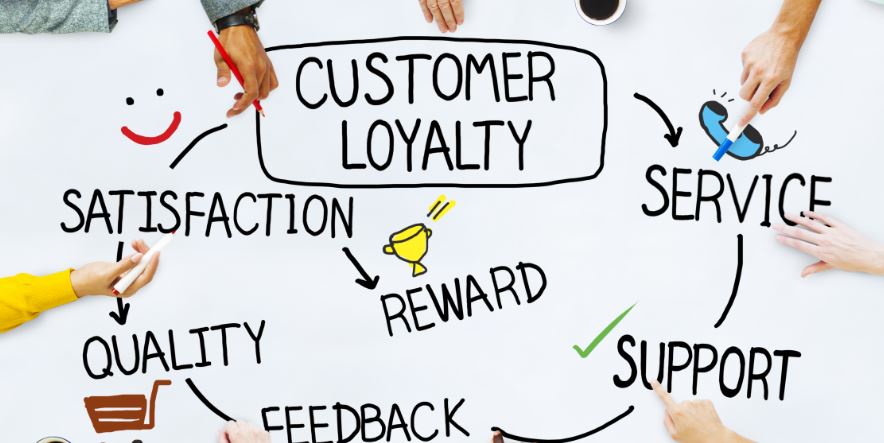Emotion is one of the strongest, most unique driving factors behind customer loyalty. If marketers could find a way to drive people’s emotions, they would then discover the key to attracting customers long term. Companies know that it costs more to acquire a new customer than to retain an existing one, and loyalty programs were designed to encourage just that: loyalty. Loyal customers spend more money on brands that they like, leading them to become brand ambassadors. A lot has happened since Holiday Inn and Marriott launched their first reward program back in 1983; according to the loyalty report 2017 “the average consumer is involved in 14 loyalty programs, but have the capacity to engage with only seven. Companies lose money on time and effort, and customers get no more value from the businesses to which they are loyal”. Loyalty programs are still relevant as a tool for marketers, but changes need to be done to keep those programs, that were created in the ‘80s, up to date with the needs of consumers today. So what should companies do to revamp loyalty programs from the past?
Incorporate tech to strengthen a positive customer experience:
Big companies that successfully incorporated rewards programs in the past are starting to notice the importance of updating their programs with the latest digital innovation and technology. My Starbucks Rewards, for instance, has significantly contributed to the coffee giant’s growth and profitability. Now, the company is placing emphasis on using technology to get its current customers to spend more at Starbucks, while still attracting and obtaining new customers.
Starbucks’ loyalty program features an app that allows customers to order online and pick up their beverage in store: “Starbucks has long touted its ‘digital flywheel’, which includes everything from its rewards program, which represented 36 percent of the company’s U.S. revenues last quarter, to its mobile order-ahead feature, which accounted for 9 percent of transactions last quarter and is now causing less congestion at stores after initial hiccups.”
Do extensive research to collect relevant customer data and consumer trends:
The success of any customer loyalty program depends on the marketing department’s ability to collect relevant data and create a personalized experience. In 2017, Coca-Cola announced it was time to stop its longstanding loyalty program, ‘My Coke Rewards (MCR)’, to make way for new strategies that engage consumers. Coca Cola also shared that it would be making a donation to charity with the remaining MCR points. Coca-Cola Give is the new destination for fans to give back to local schools and other causes. Fans can convert codes found under the caps of Coke beverages and inside multi-packs (donation values vary by product) into contributions that support their local schools and causes.
Coca Cola collected information from MCR members about how unused points should be donated to benefit communities across America. Customers picked from a range of donation categories: empowerment, environment and the winning category, education. “Two organizations committed to educating and developing young people, Boys & Girls Clubs of America and Junior Achievement USA, each will receive a $1 million donation from Coca-Cola North America. Additionally, 10 percent of each donation will be designated for the Metro Atlanta chapters.”
Show you care to achieve customer retention goals:
Customers want loyalty programs to actually reward them and to feel appreciated. Customers love companies that show they care. Reward marketing is the practice of using a rewards or loyalty program to entice both new and existing customers. “Beauty giant Sephora is one of the most prolific examples of using a rewards program to do more than just cultivate loyalty. With over 10 million members and counting, the makeup giant has gotten customers to repeatedly drop large amounts of money on a regular basis in a way that competing beauty brands simply haven’t.”
Sephora uses highly-sophisticated segmentation to create customized newsletter content. By analyzing Beauty Insiders’ individual purchases, Sephora creates customized beauty profiles based on age, skin type, preferences, and other criteria for beauty products. Sephora offers lots of free gifts based on these profiles. They also make Beauty Insiders feel rewarded by surprising them with free makeovers and services in addition to products. With these services, like free makeovers, Sephora incentivizes customers to visit their physical stores, encouraging customers to spend more money.
Recent research has shown that “over 65 percent of 1,000 people surveyed shared they felt an emotional connection with a brand or business. The majority of these connections were positive (over 90 percent) across several industries.” Loyalty programs offer more than stamps that get your next free coffee. Technology offers new opportunities for brands to revamp their outdated rewards programs. Machine learning offers new ways to collect quick and valuable information, mobile apps give easy access to all benefits, and blockchain technology could potentially bring quick and tangible token-based incentives and rewards to brands. Incorporating token-based incentives, companies can make more effective marketing decisions and obtain unparalleled insights into the marketing budgets spent. Technology opens the doors for companies to create customized loyalty programs that can actually show the customer they care about them and want to actually reward them. A good combination of up-to-date technology, effective data collection and a creative customized marketing plan are the keys to make any loyalty program successful.


